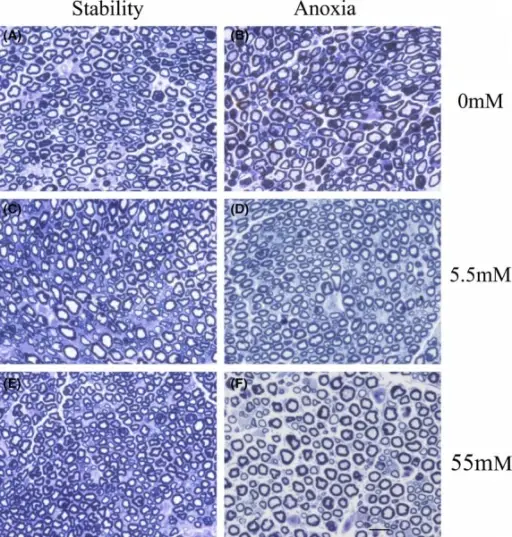Environmental pathology is the condition which results from exposure to exogenous harmful chemical or physical agents.
What is Undernutrition?
Undernutrition is an insufficient intake of energy and nutrients to meet an individual’s needs to maintain good health. Undernutrition is the leading cause of global morbidity and mortality.
What is Marasmus?
Marasmus is a form of severe malnutrition characterized by energy deficiency.
What is the Pathology of Marasmus?
The pathology of marasmus is:
-Etiology: Causes of marasmus include maternal malnutrition, maternal anemia, poverty, and pathological condition in the newborn such as diarrhea.
-Genes involved: None.
-Pathogenesis: The sequence of events that lead to marasmus always includes a negative energy balance.
-Morphology: The morphology associated with marasmus shows growth retardation (in weight more than in height) and progressive wasting of subcutaneous fat and muscle.
How does Marasmus Present?
Patients with marasmus are typically children. The symptoms, features, and clinical findings associated with marasmus include unusual body temperature, anemia, dehydration, hypovolemic shock, decreased consciousness, abdominal manifestations, large or small liver, blood or mucus in the stools, ocular manifestations, dermal manifestations, dry skin, and brittle hairs.
How is Marasmus Diagnosed?
Marasmus is diagnosed by doing a physical examination.
How is Marasmus Treated?
Marasmus is treated with resuscitation (rehydration), stabilization, nutritional rehabilitation and follow-up.
What is the Prognosis of Marasmus?
The prognosis of marasmus is poor, if left untreated, it can lead to death.
What is Kwashiorkor?
Kwashiorkor occurs due to severe protein deficiency but normal caloric intake.
What is the Pathology of Kwashirorkor?
The pathology of kwashiorkor is:
-Etiology: The cause of kwashiorkor is the lack of protein in the diet.
-Genes involved: None.
-Pathogenesis: The sequence of events that lead to kwashiorkor includes low levels of albumin and, as a result, intravascular depletion.
-Morphology: The morphology associated with kwashiorkor shows an emaciated appearance in all body parts except ankles, feet, and belly.
How does Kwashirorkor Present?
Kwashiorkor typically affects children. The symptoms, features, and clinical findings associated with kwashiorkor include peripheral edema, hair that is easily pulled out, dermatosis, flaky paint appearance of the skin, poor appetite, reduced subcutaneous fat, fatty liver is common,
How is Kwashirorkor Diagnosed?
Kwashiorkor is diagnosed by examining hepatomegaly and edema.
How is Kwashirorkor Treated?
Kwashirorkor is treated includes antibiotics, an increase in dietary calories, intravenous fluids.
What is the Prognosis of Kwashirorkor?
The prognosis of kwashirorkor is poor due to stunted growth.
What are the Leading Causes of Death in Developed Countries?
Ischemic heart disease and cerebrovascular disease are the leading cause of death in developed countries.
What are the Leading Causes of Death in Developing Countries?
Five out of ten leading causes of death are infectious diseases in developing countries. Fifty percent of deaths in children under five years old are due to three preventable conditions: malaria, diarrheal disease, and pneumonia.
What are Current Examples of Emerging Diseases?
Current examples of emerging diseases include:
- Coronavirus
- HIV infections
- SARS
- Lyme disease
- Escherichia coli O157:H7 (E. coli)
- Hantavirus
- Dengue fever
- West Nile virus
- Zika virus
What are the Health Effects of Climate Change?
The health effects of climate change include:
- Heatwaves
- Floods
- Crop changes
- Vector-borne illnesses
- Diarrheal illnesses
- Malnutrition
What is Environmental Pollution?
Environmental pollution is the presence in the environment of an agent which is potentially damaging to either the environment or human health.
Examples of environmental pollution include:
- Air pollution
- Lead
- Mercury
- Arsenic
- Cadmium
What is Air pollution?
Air pollution is the contamination of the indoor or outdoor environment by any chemical, physical or biological agent that modifies the natural characteristics of the atmosphere. Air pollution may cause diseases such as ischemic heart disease, stroke, chronic obstructive pulmonary disease, lung cancer, and acute lower respiratory infections.
What is the Pathology of Air Pollution?
The pathology of air pollution is:
-Etiology: The cause of air pollution is pulmonary issues, soot, and carbon monoxide.
-Genes involved: None.
-Pathogenesis: The sequence of events that lead to air pollution is the particulate matter that has been identified as the major bioactive constituent in polluted air. It causes a systemic inflammatory and oxidative stress response
-Morphology: The morphology associated with air pollution shows a complex mixture of thousands of pollutants. This mixture may include solid and liquid particles suspended in the air (particulate matter), and various gases such as ozone, nitrogen oxides, volatile organic compounds, and carbon monoxide.
-Histology: The histology associated with air pollution shows anthracosis in the pulmonary tissue.
How does Air Pollution Present?
Patients with air pollution typically affect males and females both present at the age range of 10-70 years. The symptoms, features, and clinical findings associated with air pollution include tiredness, headache or dizziness, coughing and sneezing, wheezing or difficulty breathing, more mucous in the nose or throat, and dry or irritated eyes, nose, throat, and skin.
How is Air Pollution Diagnosed?
Air pollution is diagnosed by exposure to high concentrations of known pollutants in the air at work and at home or about lung disorders such as asthma, COPD, etc.
How is Air Pollution Treated?
Air pollution is treated and reduced by recycling and reusing, use of public transport, avoiding usage of crackers, use of public transport, etc.
What is the Prognosis of Air Pollution?
The prognosis of air pollution is good if treated early, however, the long-term effects of air pollution may cause permanent health effects such as accelerated lung damage.
What is Lead Toxicity?
Lead is a type of metal that is poisonous to your body. Lead may cause disease by contaminated air, water, dust, food, or consumer products
What is the Pathology of Lead Toxicity?
The pathology of lead toxicity is:
-Etiology: The cause of lead toxicity is due to lead binding to sulfhydryl groups in proteins, which interferes with calcium metabolism.
-Genes involved: None.
-Pathogenesis: The sequence of events that led to lead toxicity includes exposure through inhalation, ingestion, or occasionally skin contact. Lead inhibits key enzymes in the heme synthesis pathway.
-Morphology: Lead toxicity may accompany neurologic hematologic, skeletal, renal, and gastrointestinal issues.
-Histology: The histology associated with lead toxicity shows ringed sideroblasts.
How does Lead Toxicity Present?
Patients with lead toxicity are typically children. The symptoms, features, and clinical findings associated with lead toxicity include abdominal pain, constipation, headaches, irritability, memory problems, infertility, and tingling in the hands and feet. In severe cases, anemia, seizures, coma, or death may occur.
How is Lead Toxicity Diagnosed?
Lead toxicity is diagnosed by measuring blood lead levels.
How is Lead Toxicity Treated?
Lead toxicity is treated with chelation therapy.
What is the Prognosis of Lead Toxicity?
The prognosis of lead toxicity is good as it is reversible if tackled earlier.
What is Mercury Toxicity?
Mercury is a highly toxic heavy metal. Mercury toxicity is a type of metal poisoning due to exposure to mercury. Mercury may cause disease by inhalation of mercury vapors.
What is the Pathology of Mercury Toxicity?
The pathology of mercury toxicity is:
-Etiology: The cause of mercury toxicity is that it binds sulfhydryl groups in proteins. Mercury causes damage to the kidneys and central nervous system.
-Genes involved: None.
-Pathogenesis: The sequence of events that lead to mercury toxicity includes binding of mercury to sulfhydryl groups and incapacitating key enzymes involved in the cellular stress response, protein repair, and oxidative damage prevention.
-Morphology: The morphology associated with mercury toxicity shows that a certain mercury compound, dimethylmercury, is so toxic that even a few microliters spilled on the skin, or even on a latex glove, can cause death.
-Histology: The histology associated with mercury toxicity shows axonal and demyelinating changes.
How does Mercury Toxicity Present?
Patients with mercury toxicity are typically females. The symptoms, features, and clinical findings associated with mercury toxicity include muscle weakness, poor coordination, numbness in the hands and feet, skin rashes, anxiety, memory problems, trouble speaking, trouble hearing, or trouble seeing.
How is Mercury Toxicity Diagnosed?
Mercury toxicity is diagnosed by determining the history of exposure, physical findings, and an elevated body burden of mercury.
How is Mercury Toxicity Treated?
Mercury toxicity is treated with chelation therapy.
What is the Prognosis of Mercury Toxicity?
The prognosis of mercury toxicity is good with reversible changes, however, prolonged exposure can do irreversible damage.
What is Arsenic Toxicity?
Arsenic is highly toxic in its inorganic form. Arsenic toxicity may occur due to elevated levels of arsenic in the body. Arsenic may cause disease by using contaminated water for drinking, food preparation, and irrigation of food crops.
What is the Pathology of Arsenic Toxicity?
The pathology of arsenic toxicity is:
-Etiology: The cause of arsenic toxicity is deleterious effects on cellular metabolism.
-Genes involved: None.
-Pathogenesis: The sequence of events that lead to arsenic toxicity shows vascular endothelial dysfunction as it inactivates endothelial nitric oxide synthase, leading to a reduction in the generation and bioavailability of nitric oxide.
-Morphology: The morphology associated with arsenic toxicity shows cascade mechanisms of free radical formation derived from the superoxide radical, combined with glutathione-depleting agents, increasing the sensitivity of cells to arsenic toxicity.
-Histology: The histology associated with arsenic toxicity shows cutaneous lesions in the form of melanosis, keratosis, and neoplastic changes.
How does Arsenic Toxicity Present?
Patients with arsenic toxicity typically are typically males. The symptoms, features, and clinical findings associated with arsenic toxicity include vomiting, abdominal pain, encephalopathy, and watery diarrhea that contains blood, heart disease, numbness, and cancer.
How is Arsenic Toxicity Diagnosed?
Arsenic toxicity is diagnosed by testing the urine, blood, or hair
How is Arsenic Toxicity Treated?
Arsenic toxicity is treated with chelation therapy and nutritional supplements.
What is the Prognosis of Arsenic Toxicity?
The prognosis of arsenic toxicity is good if treated earlier, however, long-term effects are irreversible.
What is Cadmium Toxicity?
Cadmium is a naturally occurring metal. Cadmium toxicity occurs when a person breathes in high levels of cadmium from the air, or eats food or drinks water containing high levels of cadmium.
What is the Pathology of Cadmium Toxicity?
The pathology of cadmium toxicity is:
-Etiology: The cause of cadmium toxicity is that it is toxic to the lungs and kidneys.
-Genes involved: None.
-Pathogenesis: The sequence of events that lead to cadmium toxicity shows cadmium affects cell proliferation, differentiation, and apoptosis. These activities interact with the DNA repair mechanism, the generation of reactive oxygen species, and the induction of apoptosis
-Morphology: The morphology associated with cadmium toxicity shows depletion of reduced glutathione (GSH), binds sulfhydryl groups with protein, and causes enhance the production of reactive oxygen species such as superoxide ion, hydrogen peroxide, and hydroxyl radicals.
-Histology: The histology associated with cadmium toxicity shows membrane disturbances in the central nervous system.
How does Cadmium Toxicity Present?
Patients with cadmium toxicity typically affect males and females present at the age range of 20-45. The symptoms, features, and clinical findings associated with cadmium toxicity include flu-like symptoms, such as body aches, chills, weakness, vomiting, diarrhea, abdominal pain, shortness of breath, swelling of the nose, pharynx, and larynx—with chronic inhalation
How is Cadmium Toxicity Diagnosed?
Cadmium toxicity is diagnosed using blood tests, urine tests, and air or nail analysis.
How is Cadmium Toxicity Treated?
Cadmium toxicity is treated with gastrointestinal tract irrigation, supportive care, and chemical decontamination traditional-based chelation therapy with appropriate chelating agents and nanoparticle-based antidotes.
What is the Prognosis of Cadmium Toxicity?
The prognosis of cadmium toxicity is good with completely reversible symptoms.



